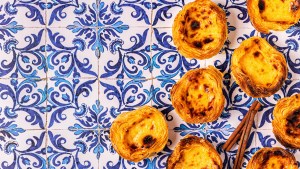Chiles en nogada (stuffed peppers in walnut sauce) are a traditional Poblano recipe. A complex, delicate, beloved, and exceptionally flavorful dish, it has a rich history intertwined with faith, tradition, and community. Its origins date back to the 18th century, nurtured within the walls of convents where the Augustinian nuns of New Spain created and preserved this now iconic recipe.
Although the dish is widely associated with the celebration of Mexico’s independence and the arrival of Agustín de Iturbide (the first emperor of Mexico) in Puebla in 1822, historians such as Eduardo Merlo Juárez suggest a deeper, more spiritual source.
Some sources explain that chiles en nogada, in fact, predate Iturbide by several decades and can be traced to the kitchens of religious communities long before his triumphant entry into the city.
These nuns, especially those of the Augustinian order, played an important role in preserving and blending different culinary traditions. Historians explain that the dish originally appeared as a dessert, with a sweet, fruit-filled chile covered in a walnut-based sauce. Over time, it evolved into a savory main course that summarizes the rich mix of European, Indigenous, and other international influences that characterized the cuisines of colonial Mexico.
The preparation of chiles en nogada coincides with the walnut harvest in late August, a period that also coincides with the feast of St. Augustine, the patron saint of the Augustinian order.

Chiles en nogada are made by stuffing roasted and peeled poblano chiles with a savory mixture of ground meat (usually beef and pork), dried fruits such as raisins, nuts, and spices. The stuffed chiles are then covered in a rich, creamy walnut sauce made from fresh walnuts, milk, and a touch of sherry or brandy for depth. The dish is traditionally garnished with fresh pomegranate seeds and parsley, creating a colorful presentation that symbolizes the Mexican flag with its green, white, and red colors. This naturally makes it the perfect Independence Day dish for September 16, and the celebrations beginning the night before.
The Augustinian nuns were not only the creators of chiles en nogada, but also the curators of a wide range of traditional dishes and sweets that have shaped Mexico’s culinary heritage. From the humble chalupas and tortas de camarón to the complex mole poblano, their kitchens were veritable laboratories of flavor. These religious women combined European techniques with indigenous ingredients influenced by Arabic and African flavors, all while preserving the customs of their faith.
Despite challenges such as excommunication and social upheaval in the 19th century, the legacy of the Augustinian nuns lived on. Though their convents in places like Guadalajara and Oaxaca were closed, their recipes, traditions, and devotion endured. Today, the order gathers nearly 300 nuns scattered throughout Mexico, the United States, and even Taiwan, perpetuating a legacy of faith, culture, and cuisine.
Chiles en nogada remains a dish of exquisite flavor, and a testament to the spiritual and cultural contributions of the Augustinian nuns to Mexican heritage.



